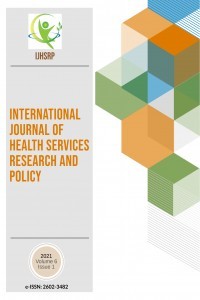MATERNAL AND FETAL FACTORS ASSOCIATED WITH MISOPROSTOL USE IN MUBENDE REGIONAL REFERRAL HOSPITAL, UGANDA
MATERNAL AND FETAL FACTORS ASSOCIATED WITH MISOPROSTOL USE IN MUBENDE REGIONAL REFERRAL HOSPITAL, UGANDA
There are numerous obstetric uses for misoprostol. It mimics the normal labour process by causing the uterus to contract strongly and by softening and dilating the cervix. This action makes it a uterotonic. The maternal uses include cervical ripening, initiating labour, treating incomplete abortions, preventing and treating postpartum haemorrhage, and causing abortions. This study sought to identify maternal and foetal risk factors related to misoprostol use among mothers who gave birth at the regional referral hospital in Mubende.
A mixed method analytical cross-sectional design was used with mothers, their infants, and healthcare professionals. 385 respondents made up the sample. Interviews, observation, and the review of documents were used to gather the data.
12.4% of mothers had ever used misoprostol. In comparison to mothers who lived in rural areas, urban mothers were two times more likely to have a positive history of misoprostol usage (COR=1.843, 95% CI (0.903-3.763)). Mothers with a parity of 2–4 had a 0.5x lower likelihood of using misoprostol [COR=0.514, 95% CI (0.166–1.595)]. Better APGAR scores of 4-7 (4 times) and 8-10 (2 times) in newborns were associated with a higher likelihood of a positive history of misoprostol use.
In conclusion, misoprostol use poses dangers to both the mother and the foetus, necessitating careful observance.
Keywords:
Misoprostol, Misoprostol use, Parity Mubende Regional Referral Hospital, Uganda,
___
- Goldberg, A. B., Greenberg, M. B., & Darney, P. D. “Misoprostol and pregnancy”, The New England Journal of Medicine, 344(1), 38–47, 2001. https://doi.org/10.1056/NEJM200101043440107
- Allen, R., & O'Brien, B. M., “Uses of misoprostol in obstetrics and gynecology”, Reviews in obstetrics & gynecology, 2(3), 159–168, 2009.
- Ambusaidi, Q., & Zutshi, A. “Effectiveness of Misoprostol for Induction of First-Trimester Miscarriages: Experience at a single tertiary care center in Oman”, Sultan Qaboos University medical journal, 15(4), 534–538, 2015. https://doi.org/10.18295/squmj.2015.15.04.016
- Marret, H., Simon, E., Beucher, G., Dreyfus, M., Gaudineau, A., Vayssière, C., Lesavre, M., Pluchon, M., Winer, N., Fernandez, H., Aubert, J., Bejan-Angoulvant, T., Jonville-Bera, A. P., Clouqueur, E., Houfflin-Debarge, V., Garrigue, A., Pierre, F., & Collège national des gynécologues obstétriciens français. “Overview and expert assessment of off-label use of misoprostol in obstetrics and gynaecology: review and report by the Collège national des gynécologues obstétriciens français”. European journal of obstetrics, gynecology, and reproductive biology, 187, 80–84, 2015. https://doi.org/10.1016/j.ejogrb.2015.01.018
- ACOG. ACOG practice bulletin No. 104: “Antibiotic prophylaxis for gynecologic procedures”, Obstetrics and Gynecology, 113(5), 1180–1189, 2009. https://doi.org/10.1097/AOG.0b013e3181a6d011
- Reproductive Health Supplies. Misoprostol for maternal health [Online]. Avaliable: https://www.rhsupplies.org/fileadmin/uploads/rhsc/Working_Groups/New_Underused_RH_Technologies_Caucus/Documents/Technical_Briefs/rhsc-brief-misoprostol_A4.pdf 2013.
- Hofmeyr, G. J., Gülmezoglu, A. M., Novikova, N., Linder, V., Ferreira, S. & Piaggio, G. (2009). “Misoprostol to prevent and treat postpartum haemorrhage: a systematic review and meta-analysis of maternal deaths and dose-related effects”, Bulletin of the World Health Organization, (87), 666-677. 2009. DOI: 10.2471/BLT.08.055715
- Høj, L., Cardoso, P., Nielsen, B. B., Hvidman, L., Nielsen, J., Aaby, P. “Effect of sublingual misoprostol on severe postpartum haemorrhage in a primary health centre in Guinea-Bissau: randomised double blind clinical trial”, British Medical Journal, 331 p. 723, 2005. https://doi.org/10.1136/bmj.331.7519.723
- Samnani, A. A. B. A., Rizvi, N., Ali, T.S. and Abrejo, F., “Barriers or gaps in the implementation of misoprostol use for post-abortion care and post-partum hemorrhage prevention in developing countries: a systematic review”, BMC Reproductive Health, 14(139), 2017. https://doi.org/10.1186/s12978-017-0383-5
- Daisley, H., “Maternal Mortality following the Use of Misoprostol”, Medicine, Science and the Law, 40(1), 78-82, 2000. https://doi.org/10.1177/0025802400040001
- Scabora-da-Silva, M. B., Ferreira, A., Habr, S. F. and Bernardi, M. M., “Misoprostol and teratogenesis in neonates”, Brazilian Journal of Pharmaceutical Sciences, 45(3), (2009). Available at: https://www.scielo.br/pdf/bjps/v45n3/05.pdf
- Pizzol, D., Silva, T., Sanseverino, I., Vieira, M. T. & Serrate, M. S., “Exposure to misoprostol and hormones during pregnancy and risk of congenital anomalies”, Cadernos de SaúdePública, 24(6), 1447-1453, 2008). https://doi.org/10.1590/S0102-311X2008000600025
- Ministry of Health [MoH]. 2022. Mubende Regional Referral Hospital. https://www.health.go.ug/sermon/mubende-regional-referral-hospital/
- Sarmah, H. K., & Hazarika, B. B. (n.d). Chapter 2: Determination of appropriate Sample Size [Online]. Available: https://shodhganga.inflibnet.ac.in/bitstream/10603/23539/7/07_chapter%202.pdf
- Omona, K., “Determinants of cesarean section rates in private-not-for-profit healthcare facilities: St. Joseph’s Hospital_ Kitovu”, Cogent Medicine, 8(1), 2021. DOI: https://doi.org/10.1080/2331205X.2021.1928939
- Mwiche, G., Ahmed, Y. and Vwalika, B., “Maternal Outcomes and Factors Associated with Different Methods of Induction of Labour at the University Teaching Hospital - Lusaka, Zambia”, Medical Journal of Zambia, 46 (2), 124 – 132, 2019.
- Irinyenikan, T. A., Loto, O. M., Oluborode, B., Awowole, I., Bello, F. A., Fabamwo, A. O., Guest, P., Ganatra, B. and Fawole, B., “A prospective study of severity of complications associated with the use of misoprostol and other abortion methods in South West Nigeria”, International Journal of Gynecology & Obstetrics, 146(3), 2019. DOI: https://doi.org/10.1002/ijgo.12877
- Adeniyi, A. A., Odukogbe, A. A., Olayemi, A., et al. “Randomisation of two dozing regimens of vaginal Misoprostol for cervical ripening and induction of labour in a low resource setting”, Nigerian Journal of Clinical Practice, 17(3), 287-91, 2014.
- Jha, M., Chitrakar, N. S., Shakya, B. & Jha, R., “Efficacy of Misoprostol as a Post Abortion Care”, Nepal Journal of Obstetrics and Gynaecology, 8(2), 71-74, 2013.
- Orioli, I. M., & Castilla, E. E., (2000). “Epidemiological assessment of misoprostol teratogenicity”, BJOG: an international journal of obstetrics and gynecology, 107(4), 519–523, 2000. https://doi.org/10.1111/j.1471-0528.2000.tb13272.x
- Yayın Aralığı: Yılda 3 Sayı
- Başlangıç: 2016
- Yayıncı: Rojan GÜMÜŞ
Sayıdaki Diğer Makaleler
Sevim ÇELİK, Elif KARAHAN, Sibel ALTINTAŞ, Özge UÇAR
Mensure TURAN, Engin TURAN, Gülbeyaz BARAN
Sukla MITRA, Soumitra DAS, Santanu SAHA
Derya Gülin PEKDEMİR, Rojjin MAMUK
A RURAL-URBAN COMPARISON OF PERFORMANCE-BASED PRIMARY HEALTH CARE SERVICES IN ERZURUM
Emine Füsun KARAŞAHİN, Orhan TURFAN, Birgül İBİŞOĞLU, Omer KARASAHİN, Gürsel BEDİR
USE OF ARTIFICIAL INTELLIGENCE IN HEALTH SERVICES MANAGEMENT IN TÜRKİYE
